A postman spent 33 years of his life building a fairytale palace with his bare hands
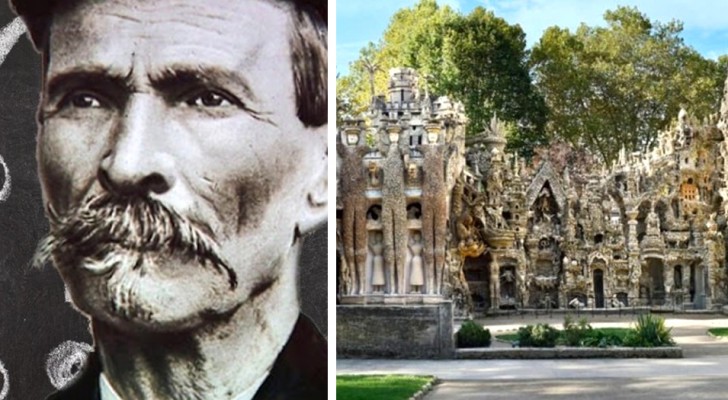
Our parents and our best teachers have always urged us to reach and exceed our goals, arguing that we can also aspire to the "impossible". Strengthened by this idea, we have worked, studied and planned to become the people we are today: lawyers, doctors, illustrators, architects, postmen, employees, bankers, etc ... Everyone has chosen what they wanted to be, based on their own inclinations. Ferdinand Cheval, however, did much more in his long life as a postman: he built a monumental palace with his bare hands! A poor man and not particularly educated who, after having collected a stone with a singular shape, had the extravagant idea of starting to collect many others. For 33 long years he worked as a postman by day and as an improvised "architect" by night, in an attempt to develop his strange project: the "Palais idéal", or "the ideal palace". The result he achieved was nothing short of incredible, demonstrating the fact that "nothing is impossible"!
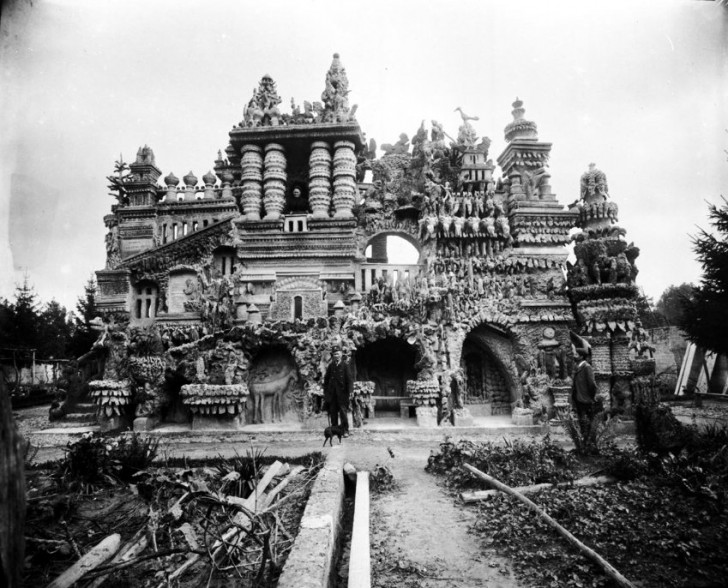
Ferdinand Cheval, better known as "the postman Cheval", was born in France in Châteauneuf-de-Galaure in 1836, into a peasant family. Of humble origins, he found work as a postman in 1867, when he still did not know what he would accomplish with his own hands. A few years later, in fact, he found a stone in a river - a stone with such a singular shape that the man had a rather bizarre idea: to build a fairytale and monumental palace. Cheval, as already said, did not have any kind of architectural or artistic training, but this didn't stop him from realizing his imaginative project thanks to the sole force of will: "Nothing is impossible for the willing" was the motto of this strange and extraordinary character. .
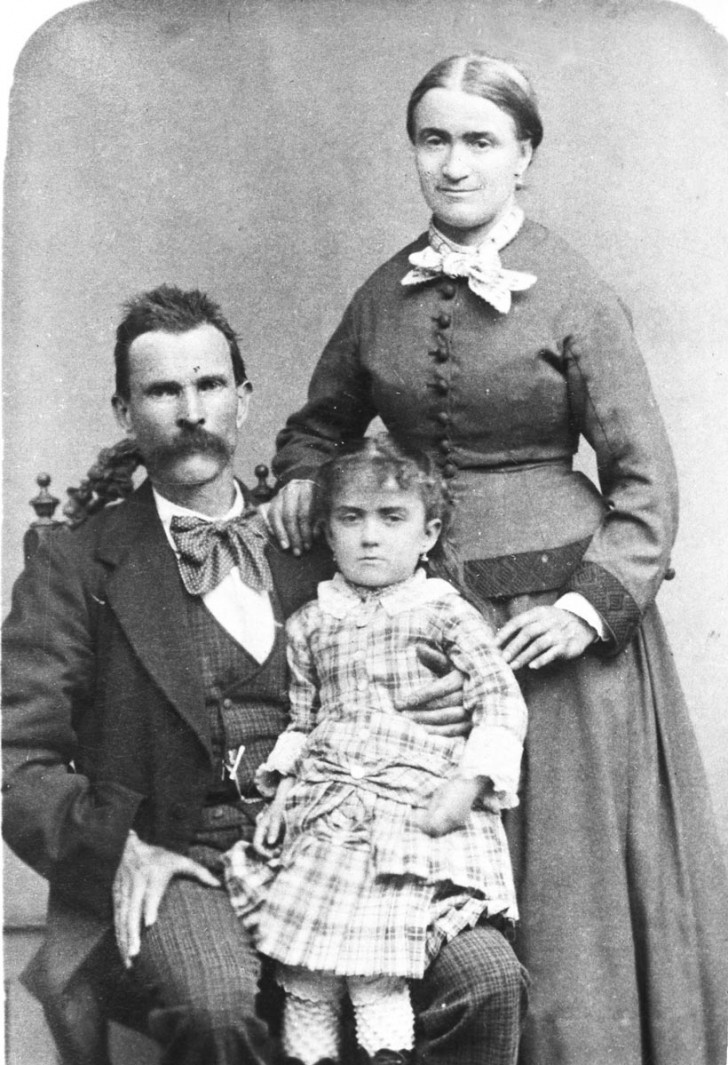
Armed with a wheelbarrow, a trowel and a ton of stones collected over the years, the postman Cheval began his endeavour using only his own physical strength. We can define Cheval as the perfect prototype of the self-taught man: devoid of any training, he built his own palace based heavily on the illustrated postcards he delivered during the day as a postman. The result was an explosive mix of the most disparate artistic styles that Cheval tried in a sense to imitate. His Ideal Palace is somewhat reminiscent of Gaudi's work in Spain, in the Sagrada Familia, a work that Cheval never saw, however, as he never traveled outside his country.
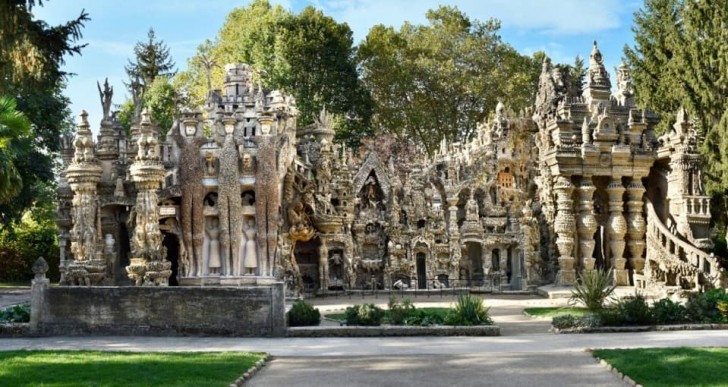
Facebook / Palais idéal du facteur Cheval
His Ideal Palace, however, is not a real palace - there are no rooms or corridors, but simply caves, crypts and labyrinths that serve exclusively to maintain the complicated structure of what we would better define as a work of art. Looking at the monument it's really hard to imagine that it could have been erected by a single man. It is, in fact, a structure about 26 meters long, 14 meters wide and 10 meters high! Thanks to an inscription left by Cheval himself, we know that the willing postman took 33 years of his life to complete this job, that is, something like 93,000 hours of work.
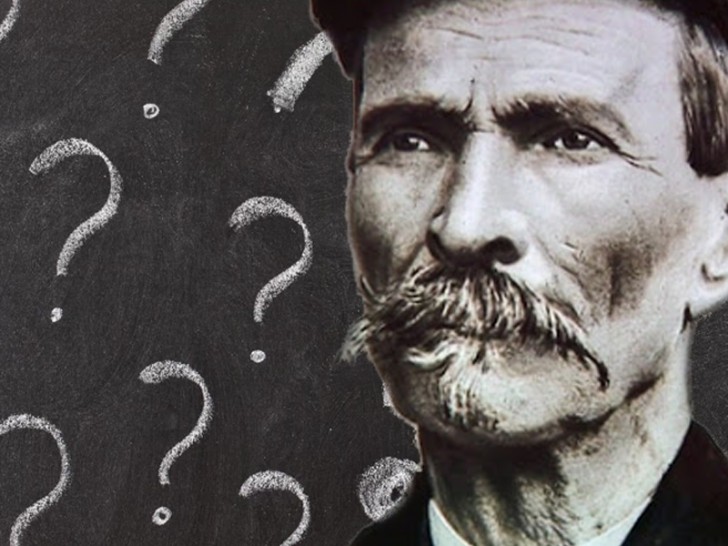
Facebook / Palais idéal du facteur Cheval
Looking more closely at his work of art, we discover that in the mix of artistic and architectural styles, Cheval has really utilised a little bit of everything: spires, references to Chinese pagodas, Hindu temples, the presence of columns, statues and even writings cover the entire structure. On the left, almost as if they were guarding his palace, we find three giants 10 meters high. They are respectively Vercingetorix, the defender of Gaul, Caesar, the conqueror of Gaul, and Archimedes, the inventor. Furthermore, inside one of the numerous niches, Cheval has walled up the wheelbarrow that he used for the construction of the entire palace.

Facebook / Palais idéal du facteur Cheval
A true example of naive architecture, which at the time did not immediately receive the deserved acclaim. While he was alive, in fact, the postman Cheval was mostly taken for the madman of the village, always dealing with unlikely situations like this. Before he died, however, he received compliments from illustrious artists, such as Pablo Picasso and Max Ernst. Today, the Palais idéal can be visited and is a very popular tourist destination.

Facebook / Palais idéal du facteur Cheval
The postman Cheval would have liked to be buried inside his palace, in a crypt, but never received a permit from the authorities, so he decided to build a mausoleum in the Hauterives cemetery, always with his own hands. It took him another 8 years to build it and today his body rests in that place, under the words "Tombeau du silence et du repos sans fin", or "Tomb of silence and endless rest".
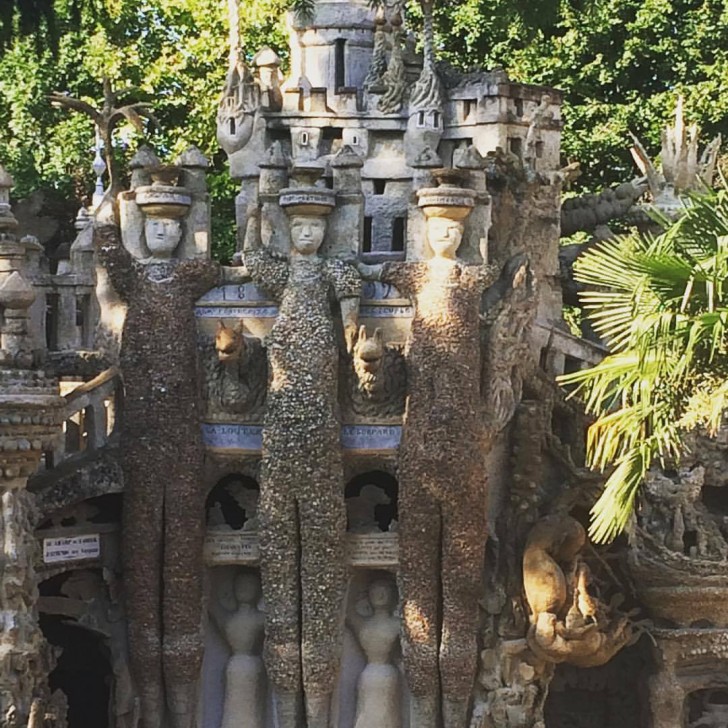
Facebook / Palais idéal du facteur Cheval
It is not clear why Cheval spent most of his life building this great work of art, he was probably simply seized by a very strong inspiration. Most of the time he was so misunderstood, that in France a saying about him was born, which is not exactly flattering: "to do as the postman Cheval", or to dwell on, exhaust yourself and waste time on useless things. Well, if all our wasted time yielded such results, the world would be even richer in wonderful works of art!





